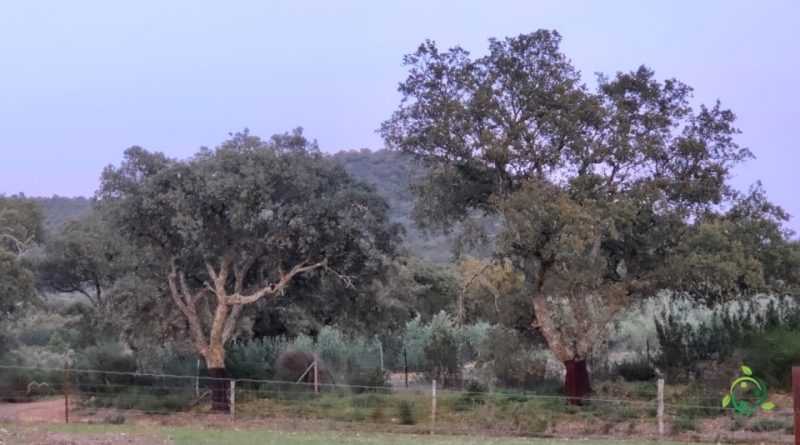Reproduction of the cork oak
Reproduction of the cork oak
The cork oak (Quercus suber L., 1753) is a tree of the Fagaceae family, native to south-western Europe and north-western Africa.
Suitable breeding habitat –
The cork oak is a plant naturalized since ancient times and spontaneous throughout the western basin of the Mediterranean Sea, very long-lived which can become centuries-old.
The habitat of this plant is that of bushes and woods characterized by the dominance or in any case by a significant presence of the plant and differentiated from holm oaks by a lower tree cover which leaves ample space for herbaceous and shrubby species.
The habitat is still of high quality and low vulnerability, essentially due to excessive grazing and forest management which, if absent or badly conducted, could lead to the invasion of holm oak species with the loss of heliophilous species, typical of the various stages in which the cork is present.
The habitat of this plant is distributed in the western parts of the Mediterranean basin, on mainly acidic soils and in Mediterranean macrobioclimate conditions, with preferences in the meso-Mediterranean bioclimatic plane as well as in some stations with a temperate macrobioclimate, in the sub-Mediterranean variant.
Propagation –
The cork oak is a plant that is not very cold resistant, tolerating temperatures down to about -8 °C for short periods of dormancy.
In fact, it grows best in areas with hot summers, doing well in Mediterranean climates. In areas with cooler summers (even if the winters are mild), such as maritime regions of the temperate zone, it often grows poorly, failing to properly mature its wood and suffering frost damage during the winter.
The plants have a broad tolerance to rainfall – they are well adapted to grow in drier Mediterranean climates, but also succeed in parts of northern Portugal with an annual rainfall of around 2,400mm.
This oak grows best in a sunny or partially shaded position and, from a pedological point of view, it prefers good, deep, fertile, well-drained, preferably somewhat sandy soil.
For its reproduction you can start from the collection of ripe acorns during the fall season (autumn), choosing the healthy and ripe ones from healthy and stable trees.
It is also advisable to prepare the soil where the acorns are to be planted, making sure that the soil is well drained and rich in organic matter. Any debris and chemical fertilizers that could be harmful to young plants must be removed.
To improve the chances of germination, some people suggest placing acorns in water for a few days before planting. Others recommend placing them in a damp plastic bag in the refrigerator for a “cold stratification” period to simulate the natural process of winter.
The planting depth of the acorns should be about 2-3 times the size of the acorn itself, covering the acorns with soil and lightly compacting the soil on top of them.
After germination, remember that the first few weeks are critical for the survival of the young seedlings. It is advisable to keep the soil constantly moist, but not excessively wet, avoiding however that the seedlings dry out or suffer damage from excessive humidity.
It is also necessary to protect the young seedlings from animals that could damage them, such as rodents or birds, using fences or protective covers.
After a few months or when the seedlings have reached a suitable size, they can be transplanted to permanent outdoor locations. Make sure you choose an area suited to the cork growing needs, which prefers a Mediterranean climate and sunny exposure.
Ecology –
Quercus suber plays a crucial role in the Mediterranean ecosystems in which it is present.
This plant grows in areas with hot, dry summers and mild, wet winters. It is generally found in shallow, acidic soils.
Its thick canopy provides shade and shelter for a variety of plant and animal species. Furthermore, the cork oak is a key species for soil conservation and erosion prevention, as its roots help stabilize the soil.
As mentioned, the reproduction of the Quercus suber takes place mainly through the dispersion of the acorns. Acorns are eaten by various animals, such as pigs, birds, and rodents. Some of these seeds are buried by animals and, if conditions are right, they will germinate and give rise to new trees.
Mediterranean ecosystems are subject to periodic forest fires and the cork oak has developed adaptations to survive this type of disturbance. The thick cork bark acts as fire protection, preventing heat from reaching the interior of the tree, and in some cases, after a fire, cork oaks can regrow from the base of the trunk; in this sense they are important sentinels in the regrowth of the forest.
Despite its ecological importance, the cork oak and its forests face several threats, including excessive logging for cork extraction, land conversion for agriculture, and urbanization. These activities can reduce the extent of cork oak forests and affect the species that depend on them. Therefore, the conservation of cork oak forests is essential to protect the biodiversity and ecological balance of Mediterranean ecosystems.

